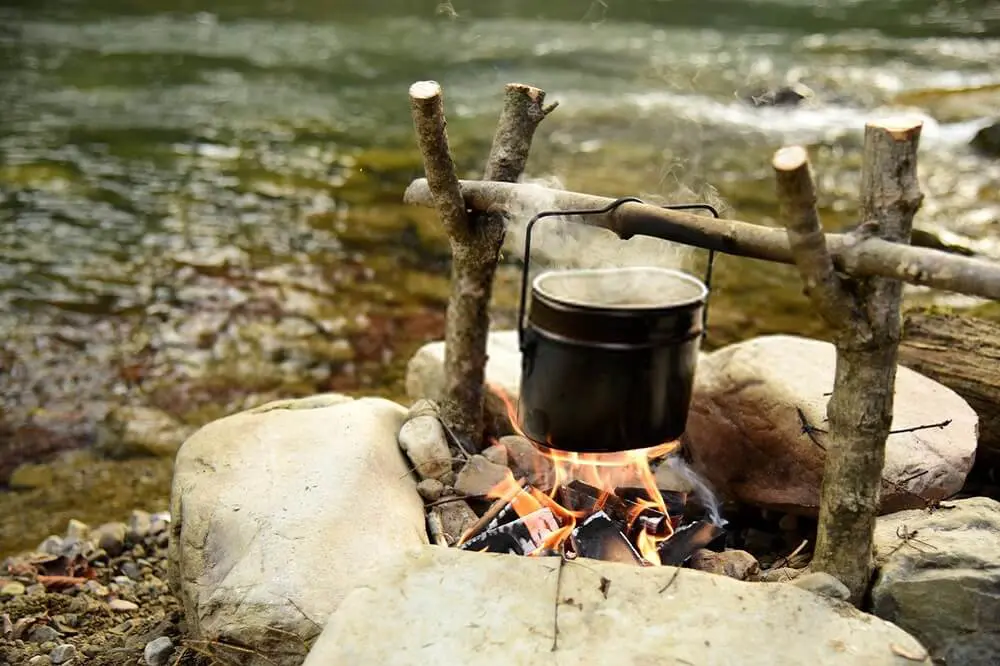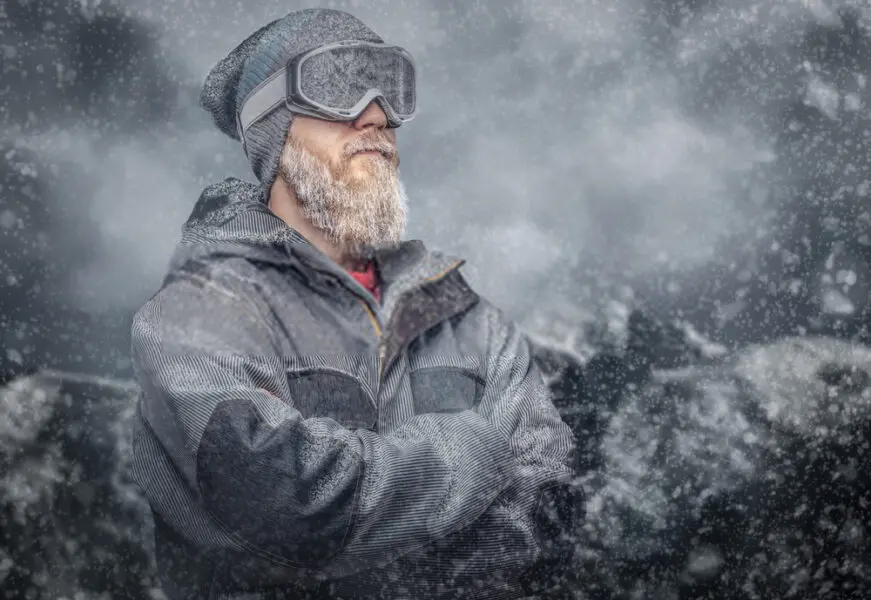When we hear the word ‘survival,’ most of the time, our brains immediately go to situations that are uncomfortable and life-threatening. However, we don’t often realize that even our everyday lives include basic survival skills, which have been made comfortable by the transformation of societal order. That is why when reading this article, we invite you to think about the fact that you might already know some of these things.

And even so, it is beneficial for your mind to refresh the importance of some daily habits to the survival of your human body. Because survival isn’t only about knowledge of the outside world, it is also about knowledge of the inside world of the body and all it needs to function properly.
Why The Seven Priorities of Survival?
The Seven Priorities of Survival is a term that was created by the American Boy Scouts, and it is a vital part of the knowledge needed to receive certain survival badges. We believe it is extremely cool and essential to teach children the priorities of survival, and they can be taught by us, their parents. After all, they can also find themselves in a situation where they need to survive in the wilderness or even in the city.
So, consider sharing your knowledge and the importance of this knowledge with children that might be in your daily surroundings. The seven priorities are in order of importance, and for a peaceful journey, we would advise you not to mix up the order too much. No, we’re not neat freaks, it’s a simple list, and the order is common sense. Let’s take a look at the priorities.

What are the seven priorities for survival?
Let’s take a look at the seven priorities of survival:
1. S.T.O.P.
Stop
When a problem occurs, the most important thing to do is stop immediately. The sooner you stop, the sooner you will be able to fix the problem. There is no point in panicking and running around in a circle looking for an answer. If you do that, you would be wasting time, which could be of extreme value for your decision-making. Take a breath and pause where you’re at.
Think
After you have calmed down, it is time to start thinking about your next steps. Like we’ve said before, your mind is the most important tool you will have in the wilderness. Without it, you can’t do anything, even physically, and we just don’t want you to dismiss its importance. First, you figure out the exact information about your problem, and then you start thinking about the best solution to your problem.
Always try to keep track of where you are geographically so that you can use this knowledge to assist you in problem-solving. (For example – Is there a place around me where I can take cover from the storm.)

Observe
If you do not see your surroundings clearly, you won’t be able to use them effectively. Furthermore, if you are in a group, keep an eye on as many people as possible. Once you do that, you can start assessing the situation and the wellness state of yourself and everyone around you.
You can also notice anything wrong in your environment before it strongly affects you. Remember to use your gear at any time it could be of use. Don’t forget to keep an eye out (and an ear) for nearby water sources so you are never dehydrated.

Plan
Once you have done everything above, you can start planning your next steps. Always consider doing the most important things. Don’t search for food if you or anyone around you is injured. Also, don’t start building a shelter if you haven’t figured out the safety measures of your surroundings. Once you have everything you need – food and water being the most important, then you can start building a shelter and settling down. Use daylight as much as possible.
2. Get First Aid
Even the smallest injury can turn into a big problem if unattended for a long period of time. The body can get poisoned or ill through a small cut in your leg or arm, for example. That’s why you need to make sure you pay attention to your body’s calls but also remind everyone else to stay safe.

If you notice that someone is hurt, we advise you to drop everything else and attend to the injury. If you are planning on climbing and someone has a sprain or a strain, you don’t want to have any additional trouble. Furthermore, keep an eye out for sicknesses that aren’t immediately visible to the outside eye, such as hypothermia. They need to be treated as soon as possible to avoid further infection. First Aid is crucial for survival in the wilderness, where you lack comfort and safety.
3. Find a shelter
You cannot last too long in an outdoor area without freezing or overheating. You will need a place that can keep you sheltered from the cold, the warm, the rain, the storms, and other natural occurrences. After reaching a certain point in your journey, you need to start thinking about settling down for the day. You don’t have to build a hut (unless you want to); however, you do have to be prepared for the night before it arrives. Keep an eye out for all the possible tools you can use for shelter building, or if there is a cave nearby, try and see it before you settle down for no unpleasant surprises.

4. Find a place to start a fire
Fire is essential for staying warm during the night and for preparing food whenever possible. Consider the daylight, and follow the time so that you aren’t stuck looking for supplies at a time when you can’t see anything, and your body is too exhausted. The body, no matter how strong, can only survive for a certain time before hypothermia kicks in or your fingers freeze. Do not dismiss the importance of fire for your survival – it can save your life.
5. Signal for Help
Once you have built your shelter and you have a fire to last for a while, you need to prepare any tools that would be effective if you need to signal for help. Such tools can be a signaling mirror, a whistle, or a flashlight which can be reflected in some type of metal. If you have a survival radio that you can contact the outside world with, that would also be of great help.

One thing we do not advise is relying on your voice to get help. Screaming ‘Help, Help’ in the wilderness can only help if you are extremely close to a location where people can come to your rescue. Therefore, remind yourself always to be prepared to ask for help if the situation occurs.
6. Hydrate
We know it sounds a bit silly that water is so far down the list, but this is because, firstly, you should have some amount of water with you at all times. Secondly, when an emergency occurs, water seems to be one of the last things the mind thinks about. And that is why we remind you not to forget to hydrate your body.
If you have no water left, make sure you are around a water stream or have the tool to extract liquid from certain types of trees. Also, try and stock enough water to last you through the night and in the morning in a situation where you can’t reach water too often.
7. Find food and eat something
It could seem strange that food is the last priority of survival. However, the human body can survive up to a month without food. Thus it is the last on our list of survival priorities. After you have checked all the points on the list above, you can start thinking about feeding your body. First, consider all the immediate supplies you have that can be used as nutrition for you and your group.

Always consider children first, as they are the weakest individuals in the group. Beware of them eating any plants on the way because even though they might seem tasty, some are poisonous and could lead to fatalities. When you are gathering natural supplies, make sure you are 100% sure that what you’re picking is healthy for you. And don’t drop everything else simply because you’re hungry.
Hunger is more mental than physical, which can be noticed once you don’t eat anything for a few hours. Your body only needs so much food to survive.
Final Words
As you have probably noticed, all seven of the priorities of survival are things that we are used to in our daily lives. We eat, we drink, we pause, we think, we need warmth and shelter, we treat our physical injuries, and we ask for help whenever we need to. Therefore, none of these things are ones that you aren’t acquainted with.
When it comes to outdoor survival, all you need to do is gather a little bit of extra knowledge and equipment which would be suitable for the different types of environments you will be entering. What we’re saying is, you shouldn’t worry too much, but these priorities should be like a mantra in your survivalist mindset.


